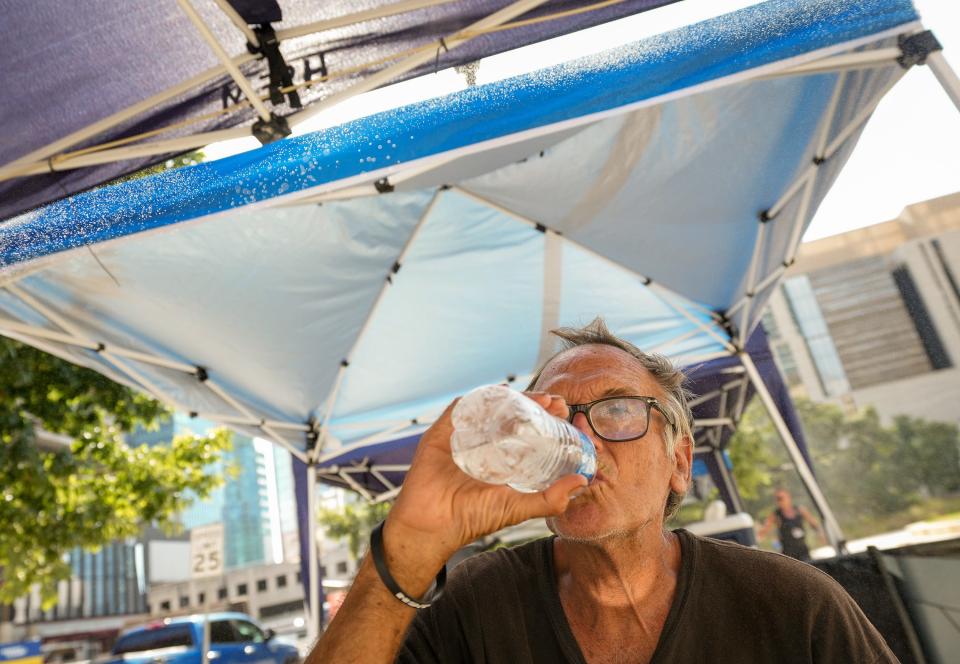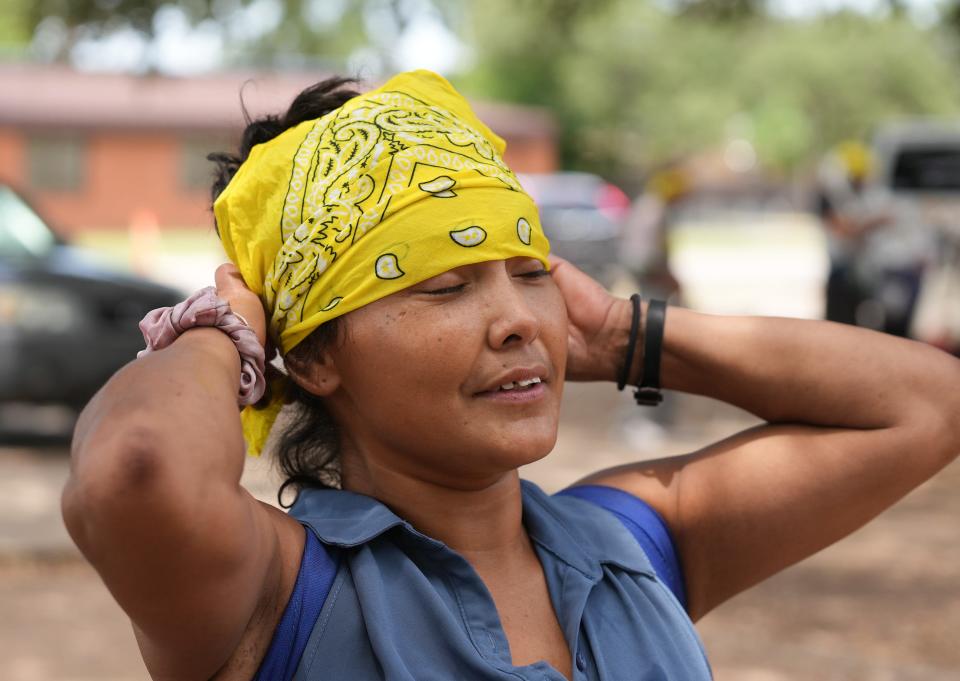Get ready for a hot Austin summer: Hydrate, seek shade and know your health risks
It's expected to be a hot summer. The National Oceanic and Atmospheric Administration is predicting the Austin area will experience above-average temperatures in June, July and August.
Those high temperatures can be hard on people.
"Any extreme is probably not good on the body," said Dr. Vivek Goswami, a cardiologist with the Heart Hospital of Austin and Austin Heart.
The body copes by pushing blood to the skin to radiate heat and cool you down. That radiating of heat increases the blood flow two to three times, Goswami said. For people with a preexisting heart issue or other medical conditions such as chronic kidney disease, that increased blood flow can be especially bad for the cardiovascular system.
Certain groups of people also have trouble regulating their body temperatures. This includes infants and older people.
"They can easily get overheated," said Dr. Shyam Sivasankar, a pediatric emergency medicine physician at Texas Children's Hospital North Austin.
Read more: Hot days mean Austin emergency rooms racing to cool people quickly
What can people do to avoid heat stroke?
Prevention is the best medicine, said Dr. Nicholas Steinour, the emergency department director for Ascension Seton hospitals. Last year, his emergency departments were seeing more cases of heat-related illnesses than in previous years during a July heat wave.
Doctors offer these tips:
Stay ahead of hydration. A lot of patients that end up in the ER have gone day after day being dehydrated. Preemptively drink a lot of water if you expect to be outside the next day.
"If you are outside and hot and thirsty, you are behind the eight ball," he said.
Read more: For those with diabetes, Central Texas heat could be especially worrisome
Know that alcohol and caffeine dehydrate you. "Hydrate, hydrate, hydrate, and please, when I say 'hydrate,' it's water," said Dr. Jean Chen from Texas Diabetes and Endocrinology. The rule of thumb when you are outside in the heat is 8 ounces of water every 20 minutes. Your urine should be clear, not dark.
Drinks with alcohol and caffeine don't count as part of your water intake. Dr. Ann Buchanan, an emergency room physician at St. David's Medical Center, also recommends alternating water and something with electrolytes if you are having trouble with hydration.
"Because it's hotter, you may need to drink more fluid than at other times," Buchanan said.

Get your body ready. If you haven't been outside regularly, think about slowly building up to more time outside. Maybe start with 10 minutes, then 15 minutes the next day, then 20. Your body needs to acclimate.
Head to the pool. If you lose electricity or don't have air conditioning, use public pools to stay cool.
Find shade. Or create your own shade with a canopy.
Wear lightweight, light-colored, breathable clothing to reflect the sunlight rather than absorb it.
Avoid being outside in the peak heat of the day, from 2 to 6 p.m.
Don't leave pets or kids in cars for any length of time.
Wear sunscreen of at least SPF 30 and reapply it every hour or two.

Use cooling centers. Libraries and park recreation facilities allow people to rest there during their open hours. Seek other indoor spaces such as big box stores or indoor malls for respite.
Stay indoors during the heat of the day. Exercise in the early morning hours or after sunset.
Check on neighbors and friends. Do they have air conditioning? Plenty of water?
Learn more: Use hydration, common sense to protect yourself from Central Texas heat
Know the signs of heat illness
Heat cramps: Sweating; muscle aches; prickly heat rash, especially in areas where clothing meets the skin; and dizziness. Move the person to a cooler area, hydrate, remove excess clothing and put cold compresses (a wet towel or shirt or an icepack) on hands, feet, armpits, neck and forehead. Call a doctor.
Heat exhaustion: Flushed skin; sweating even more heavily; cold or clammy skin; nausea; not wanting to eat; and a shallow heartbeat. Move the person to a cooler area, hydrate with water or an electrolyte drink, remove excess clothing, use cold compresses or spray them with water. Call the doctor to see if you need to go to the emergency room or a doctor's office.
Heat stroke: No sweating; fast heartbeat; fainting or feeling faint; breathing quickly; confusion or delirium; loss of consciousness; and a high temperature. This is a medical emergency. If you can, quickly drive the person to the emergency room. If not, call 911. While driving or waiting for the ambulance, do all the same interventions: hydration, cooler area, less clothing and cold compresses.
This article originally appeared on Austin American-Statesman: 13 cool tips to stay safe during a hotter than normal Texas summer

